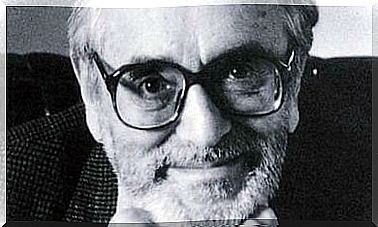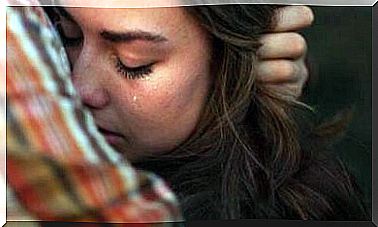Enteroceptive Exposure In Panic Disorder

Have you ever heard of an enteroceptive exposure ? Panic attacks are a frequent cause of medical consultation. When the specialist does not detect organic or physical factors, he refers the patient to a clinical psychologist.
In other cases, especially for lack of preparation in the matter, the patient is treated with antidepressants or anxiolytics, without obtaining a substantial improvement. On the other hand, the enteroceptive exposure technique that we describe in the following lines has proved to be useful.
What is a panic attack?
Specifically, the DSM5 describes panic attacks as follows: “… sudden onset of intense fear or malaise accompanied by at least 4 of the 13 symptoms […]. Symptoms generally peak in intensity within 10 minutes and subside within minutes.
Such symptoms can include: fear of dying, going crazy or losing control, feelings of unreality, estrangement (derealization), or detachment from oneself (depersonalization), chest pain or discomfort, dizziness, unstable feelings, or fainting, feeling of choking, flushing or shivering, nausea or abdominal pain, numbness or tingling sensations, palpitations or increased heart rate, feeling short of breath or choking, sweating, shaking or shaking.
These symptoms, which are nothing more than manifestations of anxiety, are experienced with intense discomfort, because they are associated with physical symptoms or imminent death. Imagine suddenly experiencing the sensations just described.
The first thing that would come to mind is that something bad is happening to us. A heart attack? I’m dying? I am going crazy?
Obviously, when the thought goes in this direction, the feeling of fear inevitably increases. It is the well-known phobophobia, or the fear of fear. Reason why, the treatment of panic attacks must include the interpretation and tolerance of these physical sensations to prevent them from increasing in intensity ; and this is precisely what the enteroceptive exposure is aimed at.

What does the enteroceptive exposure consist of?
The technique of choice for anxiety disorders is almost always exposure, but we would be sinful of reductionism if we did not add more. While exposition is a fairly easy technique to describe theoretically, it may not be so in practice. It also provides for different approaches.
Same technique, same goal, but different procedures. It is extremely important that the treatment is carried out by a specialized psychologist. Otherwise, not only may the problem not go away, it may even worsen.
The purpose of the exposure is to accustom the patient to the phobic stimulus. This stimulus can consist of a concrete element (specific phobias), a situation (social phobia) or a sensation. Adaptation is the physiological process that occurs when the person notices that the phobic stimulus no longer causes the consequences that he expected.
In the case of the enteroceptive exposure, exposing oneself to the physical sensations of anxiety without adopting any conduct aimed at containing the discomfort (taking anxiolytics, being accompanied by a family member, drinking water, wearing sunglasses.), Leads the person to understand that such sensations are just that, sensations.
The specialist must encourage the patient to voluntarily provoke the sensations of panic in the session and outside. Likewise, it is important not to adopt any conduct that hinders exposure or facilitates avoidance.

Enteroceptive exposure exercises
In principle, this technique consists in generating the symptoms for about a minute through some exercises that try to imitate the most frequent and feared symptoms of the panic crisis. The most common strategies to achieve this are:
- Intentional hyperventilation. It causes a feeling of lightheadedness, derealization, blurred vision and dizziness.
- Turning around in a swivel chair in order to cause dizziness and loss of orientation.
- Breathe through a cannula. It causes wheezing and a feeling of suffocation due to the restriction of air flow.
- Hold your breath. It causes a feeling of suffocation.
- Run to the place of the exhibition. It causes an increase in heart rate, breathing and sweating.
- Tension of the muscle areas. It causes a feeling of tension and hypervigilance.
- Move your head from side to side. It causes dizziness and tension in the neck.
The induction of these symptoms should be performed 3 to 5 times a day – the frequency varies according to the individual case. On the other hand, it is more important to do the exposure well once rather than fail several times; until, thanks to the adaptation, the patient begins to present lower levels of anxiety and then is able to manage them.
Conclusions
In the more advanced stages of treatment, the patient performs more “natural” exercises in his daily context. For example, playing sports, walking fast, climbing stairs, entering a sauna… In this case the exercises should not last more than three minutes.
Although enteroceptive exposure is a very effective treatment in panic attacks, it is good to prioritize the patient’s needs and verify the need for other techniques or other treatments.
Some patients reject this type of exposure because they do not feel they can resist to the point where the habit is adopted. In the treatment of a patient with panic disorder, the therapeutic relationship based on empathy and understanding must be privileged.
Psychoeducation is equally crucial. When the patient understands what is happening to him and recognizes the vicious cycle of his anxiety, he will more easily accept the exposure.









